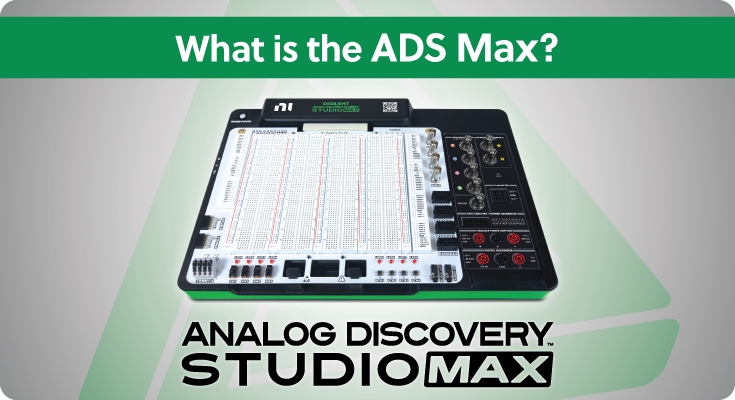A recent question asked on the Digilent Forum was about how to measure the Total Harmonic Distortion (THD) in audio signals with the Analog Discovery 3. Let’s clarify the options. …
Featured
Recent Articles
The latest WaveForms software update includes several enhancements and new features designed to improve your testing and measurement experience. Scope: Added automotive relative compression measurements, additional cursor for automotive analysis, …
Ready to put your digital logic knowledge to the test? We’re excited to share a project that brings fundamental concepts like state machines and counters to life using the popular …
At Digilent, we’re all about bridging the gap between electrical engineering theory and practice. Our versatile new Analog Discovery Studio Max partnered with the power of NI LabVIEW can create …
Engineering & Learning Via Inspired Students In less than 120 words, when Digilent makes a cheaper version of the ELVIS III, what can you expect? An advanced Analog Discovery Studio …
At Digilent, we understand the evolving needs of engineering education. That’s why we’re thrilled to introduce the Analog Discovery Studio Max (ADS Max), a versatile and comprehensive electronics laboratory solution …
Popular Posts
At Digilent, we understand the evolving needs of engineering education. That’s why we’re thrilled to introduce the Analog Discovery Studio Max (ADS Max), a versatile and comprehensive electronics laboratory solution …
A small post for Digilent’s largest products. All three rebranded NI VirtualBenches are now sold by Digilent and supported by WaveForms on Windows Fastest and highest bandwidth mixed signal …
Let’s talk about clocking. It’s crucial to the functionality of FPGA boards and digital design in general, as all synchronous logic depends on clocks. In this article, we’ll define some …
Shifting Academic Focus In late June, Digilent attended the American Society of Engineering Education (ASEE) Annual Conference. We’re no strangers to the event, and have been proud to show off …
Brandon K. provides a quick rundown on the nuances of notation.
If you’ve been around electronics for a while, you’ve probably noticed that components like resistors, capacitors, zener diodes and inductors come in some odd values. Looking at the chart above, there seems to be no clear rationale behind the values, but there is a pattern. 47kΩ resistors and 22μF capacitors are everywhere, but not 40kΩ or 50kΩ resistors, or 20μF or 30μF capacitors. So what’s the deal? It all has to do with preferred numbers.
Today we will go over a brief overview on FPGAs!
At this point in reading the blog and going through the learn material, you might realize that there is a lot of FPGA code. It doesn’t look like C, it doesn’t look like Java…what is it?



